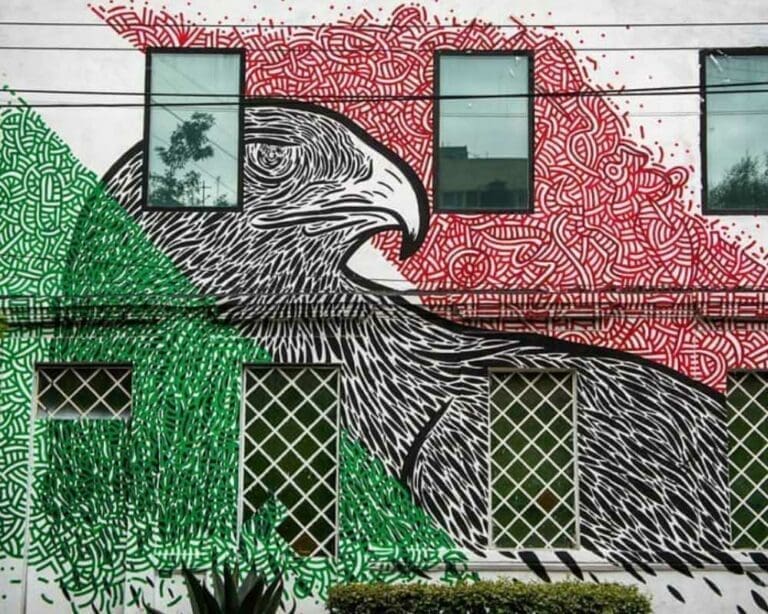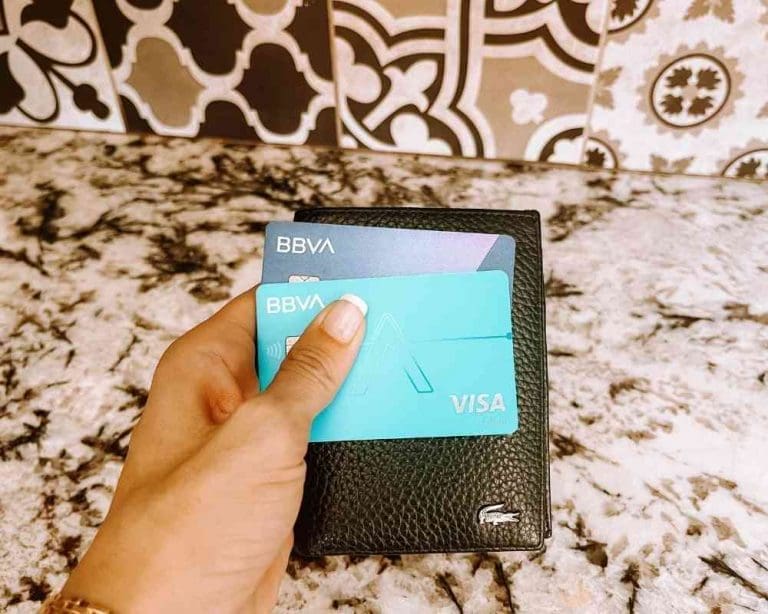How much money do you need to live comfortably in Mexico City? | Cost of living in Mexico City
Hola! I have lived in Mexico since 2018, and Mexico City was my first stop. In this article, I will share the real cost of living in Mexico City, the place I called home for six months. All prices in this post are in United States dollar (USD).
The first thing you need to know, which I deem highly important: is that the cost of living in Mexico City varies by neighborhood. I’ve seen many online articles and resources with a generalized Mexico City cost of living and do not mention that most foreigners opt to go to upper-scale neighborhoods like Roma, Condesa, or Polanco.
And these three neighborhoods have different price tags. Polanco is one of the most upscale neighborhoods in Mexico City, known for its luxury shops, fine dining, and high-end real estate.
The average rent for a one-bedroom apartment in Polanco is around $1,200 USD per month, with utilities and other expenses relatively higher due to the neighborhood’s upscale nature. Restaurants and entertainment options in Polanco tend to be more expensive than in other areas of the city.
Condesa and Roma, two neighboring areas, are known for their bohemian atmosphere, tree-lined streets, and vibrant nightlife. The average rent for a one-bedroom apartment in these neighborhoods ranges between $800 and $1,000 USD monthly.

Both Condesa and Roma have a wide variety of dining options, from street food to high-end restaurants, offering a range of price points for residents. Utilities and other costs are moderately priced compared to Polanco.
Coyoacán, a charming neighborhood with a rich history and a relaxed atmosphere, has average rent for a one-bedroom apartment of around $700 USD. The utilities, groceries, and other expenses are lower than in Polanco, Condesa, and Roma. Coyoacán has a mix of local markets, restaurants, and entertainment options, offering a more affordable cost of living in Mexico City.
San Ángel, known for its cobblestone streets, colonial architecture, and art scene, has average rents for a one-bedroom apartment around $800 USD per month.
The cost of utilities and other expenses is similar to those in Coyoacán. Dining and entertainment options in San Ángel range from budget-friendly to upscale, providing diverse choices for residents.
In summary, the cost of living in Mexico City’s top neighborhoods varies, with Polanco being the most expensive, followed by Condesa, Roma, San Ángel, and Coyacán. Each neighborhood offers a unique atmosphere and lifestyle, and individuals should consider their preferences and budget when choosing where to live.
🧐 Questions about cost of living in Mexico City? Ask us on Tiktok.

💲 Personal cost of living in Mexico City
The cost of living in Mexico City depends on your lifestyle and how comfortably you want to live. You can live for as low as $1,500 USD to $5,000 USD a month as you please. Just make sure that everything is within your means so you can have a comfortable life here.
You don’t want to move to Mexico and spend the same exact amount that you are spending from back home in the USA or Europe. The idea is to have lower costs but let me tell you that the lower costs in Mexico is still cheaper for what it is.
For example, a brunch at a rooftop bar can cost $25 USD where you can have unlimited drinks and food at a restaurant. While in the United States and Europe, $25 USD is very low, and you can’t probably get the same in a prime area in Mexico City.
To give you a more concrete example, I am a single woman with 2 dogs. Below are my personal cost of living in Mexico City:

- I put $1,800 USD max for renting a 2-bedroom place in a prime area in Mexico City. My options are really just between Roma and Condesa neighborhoods. Rent in Polanco is way more expensive so I did not include that neighborhood in my options.
- As a food journalist, I need to invest a little bit on work so I put a $600 USD budget per month for eating out (including tasting menus a fine dining restaurants and street food).
- Water and Internet are most of the time included in the rent. But as a digital nomad and remote worker who works 100% from home, I needed a higher grade Internet so I upgraded mine to a $40 USD per month account instead of the basic $15 USD per month.
- I do not use the AC in Mexico City and you actually do not need it. There is also no heating system in homes in Mexico City so you have to buy that yourself. I pay up to $25 USD per month for electricity Considering I work at home all the time, this is a low price.
- My Telcel phone bill costs $30 USD per month (post paid plan, fixed rate).
- Gym, pilates, and yoga cost $8 USD per session/class. I exercise 7 days a week so let’s say I spend $20 a day for gym membership.
- Pet grooming is about $8 USD per dog per month and their dog food is about $15 USD per month.
- Manicure, pedicure, massages and haircuts cost me about $200 USD per month/visit.
🇺🇸 Cost of living in Mexico City vs. United States
When comparing the cost of living in Mexico City to the United States, it’s important to note that costs can vary depending on the specific city within the U.S. For this comparison, we’ll use average costs across the country as a baseline.
The cost of living in Mexico City is generally lower than in the United States. For example, rent for a one-bedroom apartment in Mexico City’s city center averages around $500 USD per month, while the same apartment outside the city center costs about $300 USD.
In contrast, the average rent for a one-bedroom apartment in the U.S. city center is approximately $1,200 USD per month. The same apartment outside the city center costs around $1,000 USD per month.
Basic utilities (electricity, heating, cooling, water, garbage) for a 915 sq ft apartment in Mexico City average around $60 USD per month. In the U.S., a same-sized apartment costs around $150 USD per month. Groceries are also generally lower in Mexico City, with items like milk, bread, and eggs costing less than their U.S. counterparts.

Transportation costs in Mexico City are significantly lower as well, with a one-way ticket on public transportation costing around $0.40 USD and a monthly pass priced at $20 USD . Gasoline prices are slightly higher in Mexico City at approximately $3.80 per gallon compared to the U.S. average of $3 USD per gallon.
Eating out and entertainment costs are also lower in Mexico City. A meal at an inexpensive restaurant costs around $5 USD, while a three-course meal for two people at a mid-range restaurant is about $30 USD. In the U.S., these costs average $15 USD and $60 USD, respectively.
A movie ticket in Mexico City costs around $4 USD, while a monthly gym membership costs about $30 USD, lower than the U.S. average of $12 USD and $40 USD.
Mexico City cost of living is generally lower compared to the United States, with lower costs in housing, utilities, groceries, transportation, eating out, and entertainment. However, other factors such as salary, job opportunities, and quality of life should also be considered when deciding where to live.
🇪🇺 Cost of living in Mexico City vs. Europe
Comparing the cost of living in Mexico City to Europe involves considering various factors such as housing, utilities, groceries, transportation, and entertainment. It’s important to note that Europe is a diverse continent with significant variations in the cost of living between countries and cities within the same country.
For this comparison, we’ll use average costs across Europe as a baseline, but remember that these numbers are approximate and may vary over time due to inflation and other factors. All amounts are expressed in USD.
The cost of living in Mexico City is generally lower than in many European cities. Rent in Mexico City tends to be more affordable, with a one-bedroom apartment in the city center averaging around $500 per month, while the same apartment in a European city center might cost around $900 to $1,200 per month, depending on the specific city. Rent outside the city center in Mexico City is also typically lower than in Europe.
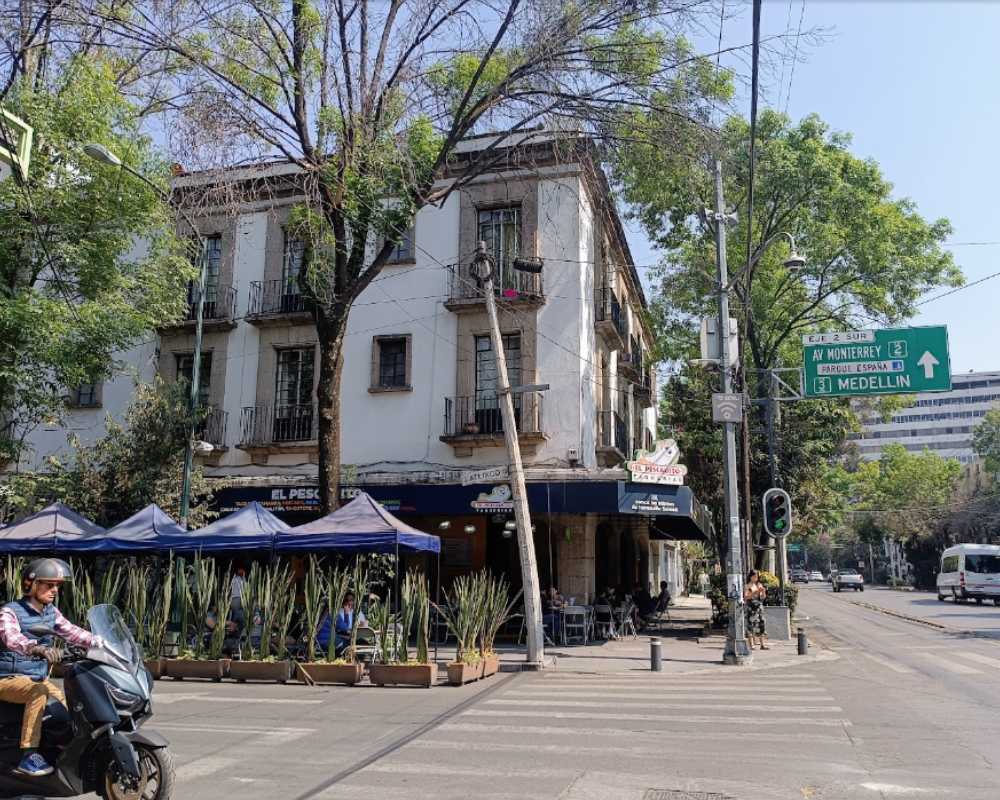
Utilities in Mexico City, such as electricity, heating, cooling, water, and garbage services, are generally cheaper than in Europe. For a 915 sq ft apartment, utilities average around $60 per month in Mexico City, while in Europe, the cost for the same-sized apartment is closer to $150 per month.
Groceries in Mexico City are often more affordable than in Europe, with staple items like milk, bread, and eggs costing less. Transportation is also significantly cheaper in Mexico City, with a one-way ticket on public transport costing around $0.40, whereas in European cities, the cost ranges from $1.50 to $3.00.
Eating out and entertainment expenses in Mexico City are typically lower than in Europe. A meal at an inexpensive restaurant in Mexico City costs around $5; in Europe, the same meal can cost between $10 and $20. Movie tickets and other entertainment activities are generally more affordable in Mexico City.
In conclusion, the cost of living in Mexico City is generally lower than in many European cities, with lower costs for housing, utilities, groceries, transportation, eating out, and entertainment. However, it’s essential to consider other factors like salary, job opportunities, and quality of life when deciding where to live.
💃🏽 Cost of living in Mexico City for a single person
Cost of living in Mexico City as a single person really depends on the lifestyle. For me, before I looked for an apartment, I put a strict $1,200 USD budget in Roma neighborhood. This way, I can be clear with my living situation in Mexico City.
Rent is a significant expense, and a one-bedroom apartment in a middle-class neighborhood can range from $1,500 to $1,800 per month USD. If you are sharing with roommates, that can go lower than $1,000 USD. Utilities, such as electricity, water, and gas, might add an additional $60 to $100 per month to the overall cost.
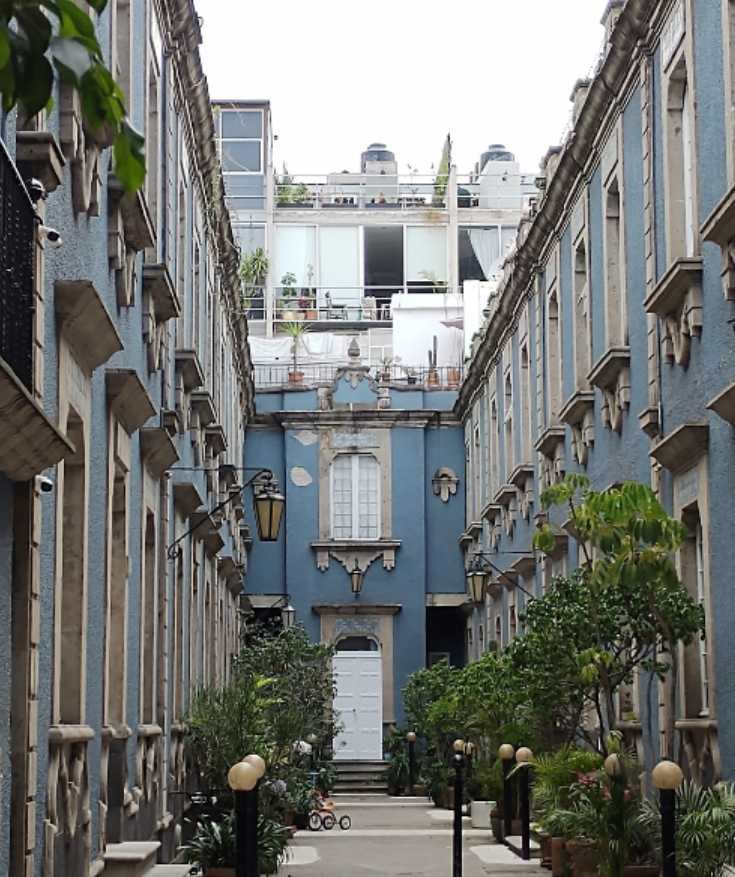
Transportation is relatively affordable in Mexico City, with public transportation options like the metro and buses costing around $0.40 per ride. A monthly budget of $50 to $100 should suffice for transportation, including occasional rideshare services.
Groceries for a single person can cost around $200 to $300 per month, depending on personal preferences and shopping habits.
Eating out and entertainment expenses will vary based on individual habits. Still, budgeting between $150 and $300 per month can provide a balance of enjoying the city’s vibrant food scene and entertainment options while being financially responsible.
🚗💨 Questions about living in Mexico? Why not ask someone who lives here?
Our team is from Canada, the United States, Australia, and Europe, all living in Mexico full-time! Let us help you move to Mexico with ease! Get in touch with us by sending a Whatsapp message to +52 473 171 5259 or e-mail [email protected] to get a quote. No hidden costs, simple prices, and extremely helpful services.
🏠 How much is the average rent in Mexico City?
The cost of renting a home in Mexico City can vary greatly depending on location, size, and the property’s overall condition. Mexico City is a sprawling metropolis with diverse neighborhoods offering different lifestyles and price ranges.
In the more upscale neighborhoods, such as Polanco, renting a one-bedroom apartment can average around $1,200 USD per month, while a two-bedroom apartment might range between $1,800 USD and $2,500 USD per month. Larger homes and luxury properties in these areas can cost several thousand dollars per month, depending on their size and amenities.
In more bohemian and trendy neighborhoods like Condesa and Roma, the average rent for a one-bedroom apartment ranges between $800 USD and $1,000 USD per month. Two-bedroom apartments cost around $1,300 to $1,800 per month. These neighborhoods offer a mix of modern and historic homes, with various dining, entertainment, and shopping options nearby.

Renting a home in more family-oriented and historic neighborhoods such as Coyoacán and San Ángel can be more affordable. A one-bedroom apartment in these areas may average around $700 to $800 monthly, while two-bedroom apartments can range from $1,000 to $1,500 USD monthly.
For those on a tighter budget, neighborhoods outside the city center, like Iztapalapa or Gustavo A. Madero, can offer more affordable rental options, with one-bedroom apartments starting at around $300 USD per month and two-bedroom apartments ranging between $400 and $600 USD per month.
It’s important to note that these prices are approximate and subject to change due to factors like inflation and market fluctuations. Additionally, utility costs, such as water, electricity, and gas, are not typically included in rental prices and will need to be factored into the overall cost of living in Mexico City.
💵 Monthly cost of living in Mexico City
Electricity
In Mexico City, electricity bills can vary based on factors such as usage, the size of the household, and the type of appliances used. The electricity provider in Mexico City is the Comisión Federal de Electricidad (CFE), which is the state-owned utility company responsible for power generation and distribution throughout the country.
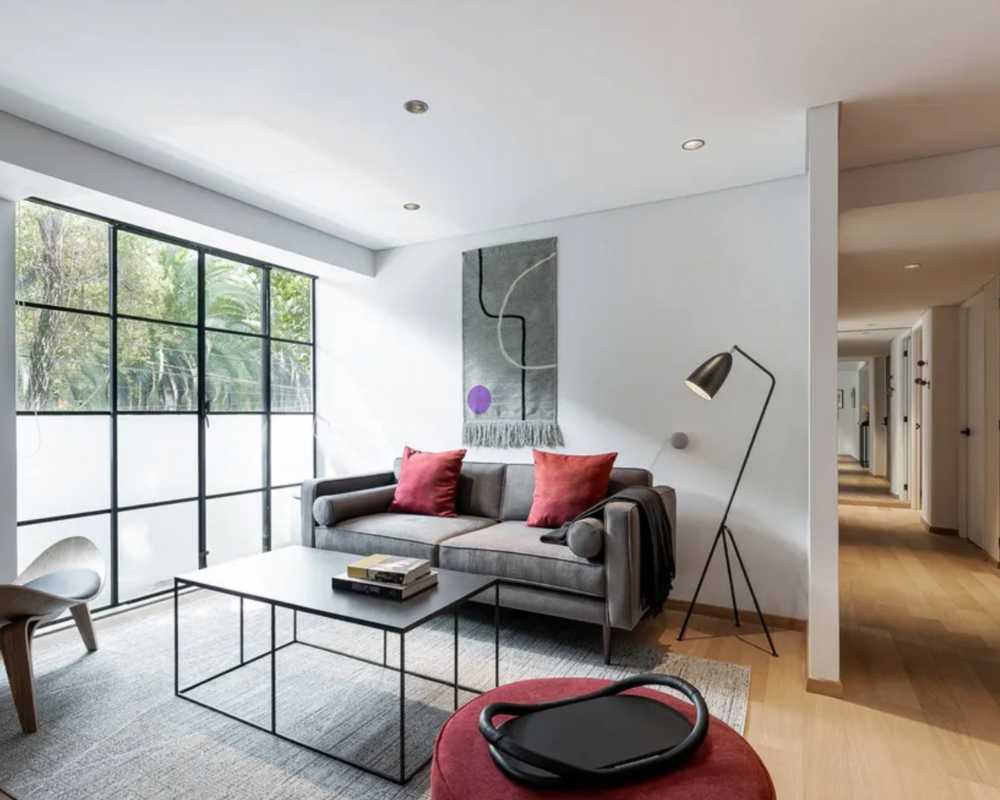
On average, a monthly electricity bill for a one- or two-bedroom apartment in Mexico City might range between $30 and $60, although this cost can be higher during the hot summer months when air conditioning usage increases. Energy-efficient appliances, LED lighting, and conscientious energy usage can help keep electricity bills at the lower end of the range.
It is important to note that electricity prices in Mexico are tiered, with the cost per kilowatt-hour increasing as consumption surpasses certain thresholds. This system encourages energy conservation and rewards low-energy consumers with lower rates. Therefore, managing energy usage effectively can lead to cost savings on monthly electricity bills in Mexico City.
Internet
In Mexico City, several internet service providers (ISPs) offer various packages to cater to different user needs. The significant ISPs include Telmex (Infinitum), Totalplay, Megacable, and Izzi. The quality and speed of internet service can vary depending on the provider, location, and type of connection.

On average, a monthly internet bill for a basic package with speeds of around 10-20 Mbps might cost between $20 and $30. However, if you require faster speeds for activities like streaming, gaming, or working from home, packages ranging from 50-200 Mbps can be available for $40 to $70 per month.
Some providers also offer bundled packages that include television and phone services at discounted rates. When selecting an ISP, consider factors such as the speed, reliability, customer service, and contract terms to ensure you get the best value and service for your internet needs in Mexico City.
Water
In Mexico City, water bills are usually included as part of the utility expenses for a household. The city’s water supply and distribution are managed by the Sistema de Aguas de la Ciudad de México (SACMEX), the local water authority. Water bills are typically issued every two months, and the payment can be made at designated payment centers, online, or through a bank.
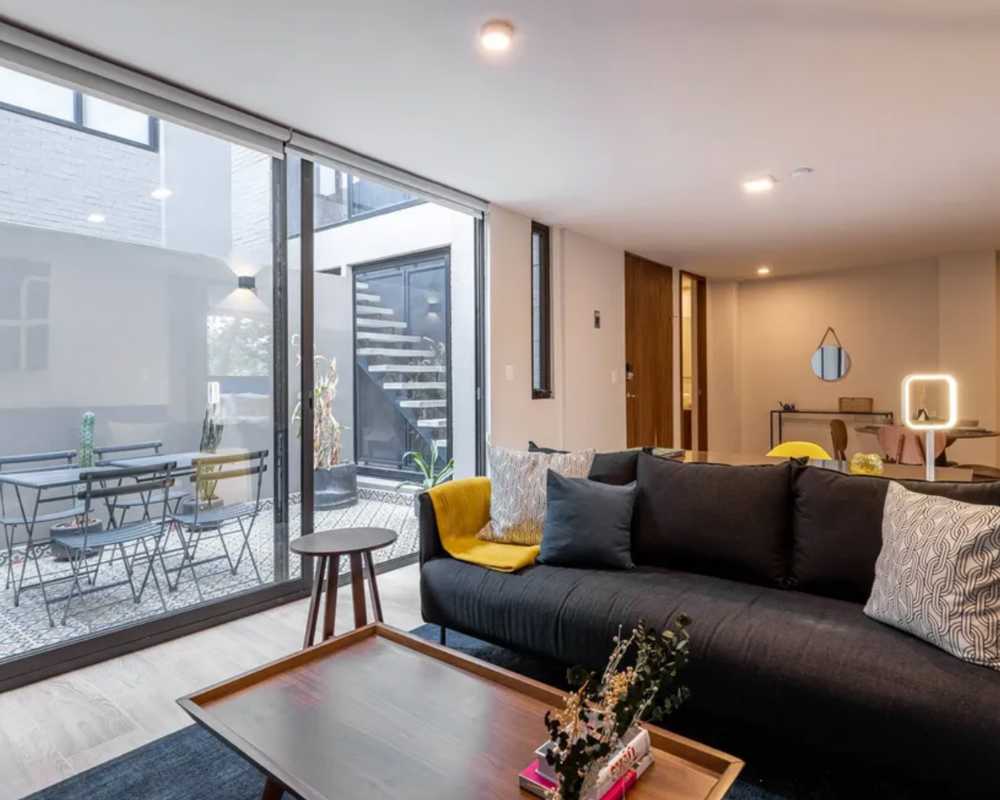
The average monthly water bill in Mexico City for a one- or two-bedroom apartment might range between $10 and $30, depending on factors such as the number of occupants, consumption habits, and the type of residential property. It’s important to note that water scarcity can be an issue in Mexico City, and residents are encouraged to use water responsibly and efficiently.
In some cases, especially in apartment buildings or condominiums, water expenses may be included in the monthly maintenance fee or shared among residents rather than billed individually. Always check the specifics of your rental or property agreement to understand how water bills are managed and paid for in your particular situation.
Mobile phone bill
In Mexico City, several mobile phone carriers offer a variety of plans and services to suit different needs and budgets. The major carriers include Telcel, AT&T, and Movistar, each providing different coverage, reliability, and pricing options.
A basic prepaid mobile phone plan with a moderate amount of call minutes, texts, and data might cost between $10 and $20 per month. These plans are popular for their flexibility, as you can easily top up your account as needed without committing to a long-term contract.

For those who require more comprehensive plans with unlimited calls, texts, and larger data allowances, postpaid plans are available, typically ranging from $20 to $50 per month. These plans often include additional features, such as international roaming, free calls to the United States and Canada, and access to streaming services.
When choosing a mobile phone carrier in Mexico City, it is essential to consider factors such as coverage, plan options, customer service, and contract terms to find the best fit for your needs and budget.
🚌 Transportation costs in Mexico City
Transportation costs in Mexico City are generally affordable, offering a wide range of options to suit different budgets and preferences. The city’s extensive public transportation system includes buses, trolleybuses, the metro, and a suburban railway, known as the Mexico City Metrobús, Metro, and Tren Suburbano, respectively.
The Mexico City Metro is one of the most affordable and efficient ways to navigate the city, with 12 lines covering over 120 miles. A single journey on the metro costs approximately $0.25, making it an economical choice for daily commutes and casual exploration.
For frequent users, a rechargeable smart card called “Tarjeta CDMX” can be purchased for around $1.50 and topped up with credit as needed.
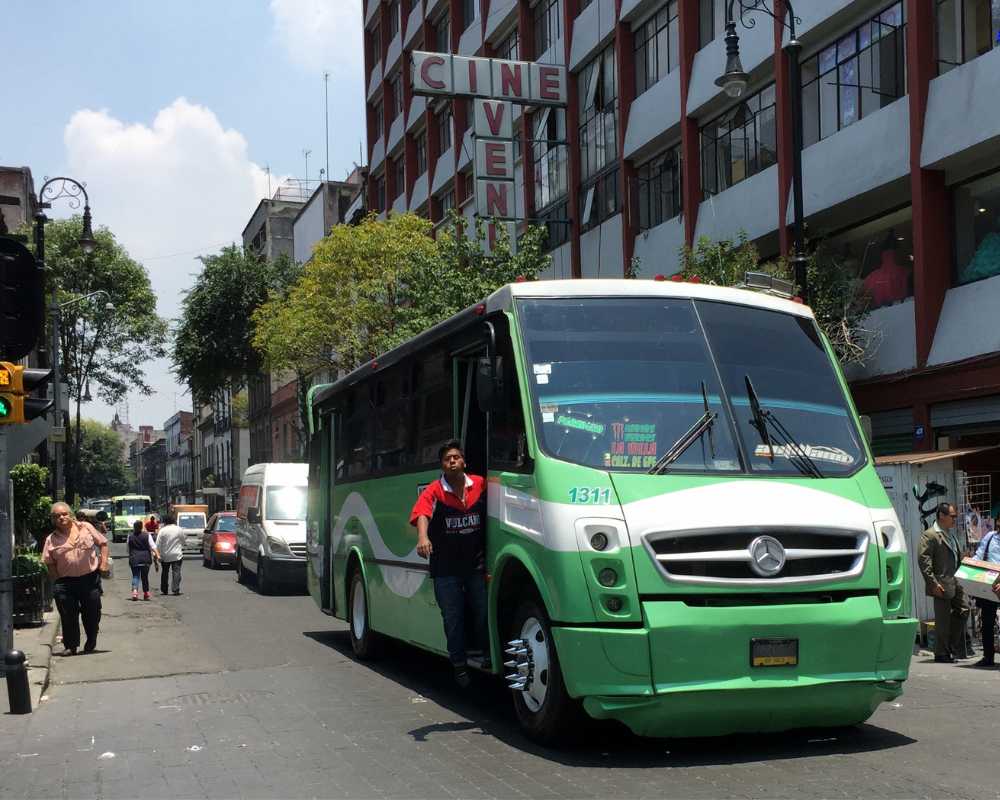
The Metrobús, a rapid transit bus system with dedicated lanes, offers another convenient and cost-effective option for traversing the city. A single journey on the Metrobús costs around $0.40, and the Tarjeta CDMX can also be used on this system.
Taxis and ridesharing services like Uber and Didi are available throughout the city, providing a more personalized transportation option. The cost of these services can vary depending on distance, time of day, and demand.
Generally, a short taxi or rideshare trip within the city center might cost around $3 to $5, while longer or during peak hours can be more expensive.
For those who prefer private transportation, owning a car in Mexico City comes with additional costs such as gasoline, insurance, and maintenance.



Gasoline prices in Mexico City are around $3.80 per gallon, and finding parking in busy areas can be challenging and expensive. Due to the city’s size and traffic congestion, many residents rely on a combination of public and private transportation options.
Transportation costs in Mexico City are generally affordable, with a wide range of public and private options available. The extensive public transportation system offers budget-friendly alternatives for commuting and exploring the city, while taxis and ridesharing services provide additional convenience at a higher cost.
🌮 Food costs in Mexico City
Grocery prices in Mexico City
The groceries in Mexico City cost can vary depending on where you shop and the specific items you purchase. Grocery prices in the city are considered relatively affordable compared to many other major cities worldwide.
Local markets, such as tianguis and traditional mercados, are prevalent throughout the city and often offer a wide range of fresh produce, meats, and other staple items at competitive prices.
Shopping at these markets can be cost-effective, as they often sell fruits and vegetables by weight, allowing you to buy only the quantity needed. Additionally, these markets provide an opportunity to support local vendors and experience the vibrant culture of Mexico City.


Supermarkets and larger grocery stores, such as Walmart, Soriana, and Chedraui, can also be found throughout the city, offering a wider selection of local and imported products. Prices at these stores might be slightly higher than those found in local markets but remain affordable.
To give you an idea of the cost of some everyday grocery items in Mexico City, here are a few approximate prices:
- 1 gallon of milk: $3.20
- 1 loaf of bread: $1.50
- 1 dozen eggs: $1.80
- 1 lb of chicken breast: $2.50
- 1 lb of beef round: $4.00
- 1 lb of apples: $1.00
- 1 lb of bananas: $0.60
- 1 lb of tomatoes: $1.00


It is important to note that these prices are approximate and can vary depending on factors like seasonality, store location, and product quality.
The cost of groceries in Mexico City is generally affordable, with various shopping options available, from local markets to supermarkets. Exploring different shopping venues and staying conscious of seasonal availability allows for maintaining a reasonably priced grocery budget while living in Mexico City.
Cost of eating out in Mexico City
Eating out in Mexico City offers various options for different budgets and culinary preferences, ranging from inexpensive street food to fine dining experiences. The city is known for its vibrant food scene, with a diverse array of flavors and dishes that cater to all tastes.
Street food is essential to Mexico City’s culinary landscape and is often very affordable. Tacos, tamales, tortas, and other popular items can be found at street food stalls, known as puestos or taquerías throughout the city.
Prices for street food are typically low, with a single taco or tamale costing around $0.50 to $1.00, depending on the ingredients and location. For a filling meal, one can expect to spend between $2 and $5 on street food, making it an economical option for those on a tight budget or looking for an authentic taste of the city’s cuisine.
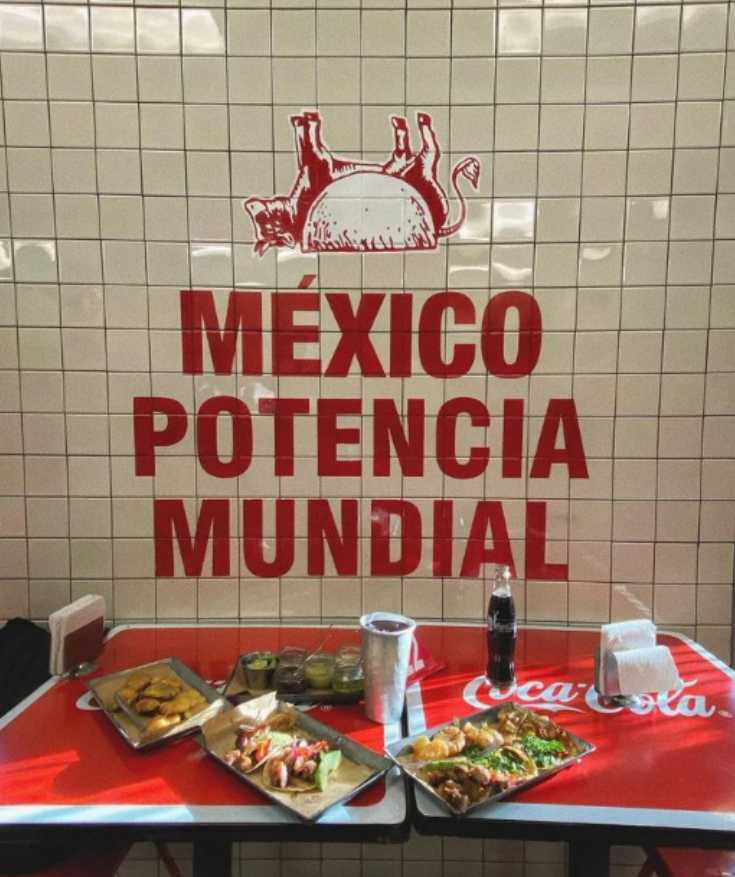

Mid-range restaurants in Mexico City offer a more formal dining experience, often featuring a wider variety of dishes and slightly higher prices. A three-course meal for two people at a mid-range restaurant can cost around $30 to $40, making it a suitable option for a casual night out or a special occasion.
Many mid-range restaurants offer a “comida corrida” or set lunch menu, which includes an appetizer, main course, and dessert for a fixed price, usually ranging from $5 to $10 per person.
Fine dining experiences in Mexico City can be found at upscale restaurants in neighborhoods like Polanco, Condesa, and Roma. These establishments often feature innovative menus, sophisticated ambiances, and higher prices.
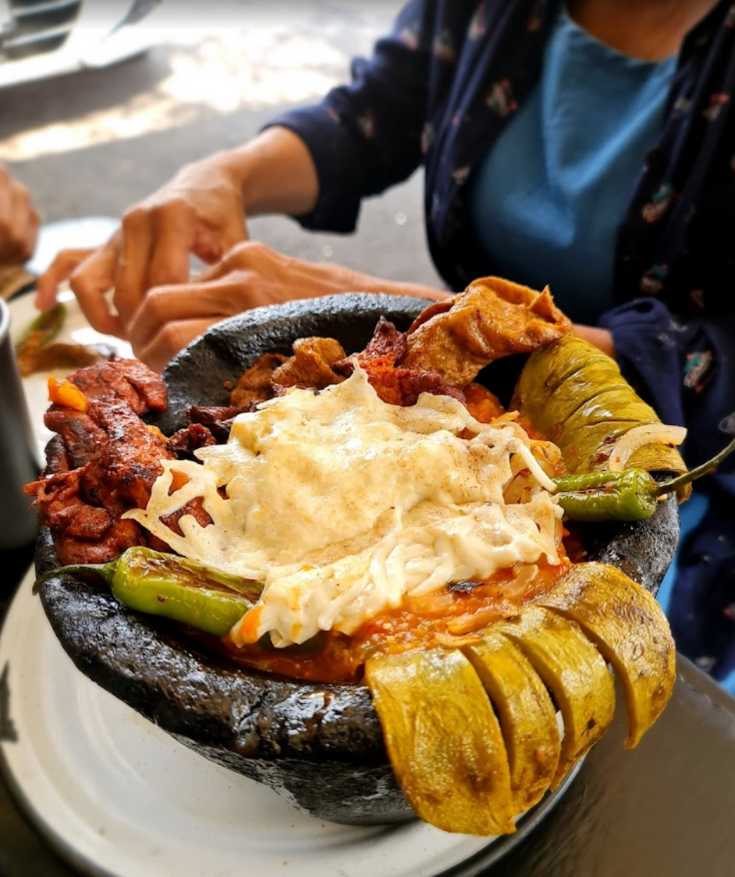

A three-course meal for two people at a fine dining restaurant can cost anywhere from $80 to $150, depending on the restaurant and the specific dishes ordered. Some exclusive restaurants might charge even higher prices for premium ingredients or a unique culinary experience.
In conclusion, eating out in Mexico City presents a diverse range of options and prices, from affordable street food to mid-range and fine dining experiences. This variety allows residents and visitors to enjoy the city’s rich culinary offerings regardless of their budget or preferences.
💆🏻♀️ Other cost of living in Mexico City
Cost of gym membership in Mexico City
The cost of gym memberships in Mexico City can vary depending on the location, facilities, and services provided. Generally, the city has three main categories of gyms: low-cost, mid-range, and premium.
Low-cost gyms, such as SmartFit and Energy Fitness, offer basic equipment and facilities at an affordable price. Memberships for these gyms typically range from $20 to $30 per month. These gyms are suitable for individuals looking for a no-frills workout experience without breaking the bank.
Mid-range gyms, like Sports World and Gold’s Gym, provide a wider range of amenities, including group classes, personal training, and better equipment. Memberships for mid-range gyms in Mexico City usually cost between $40 and $60 per month.
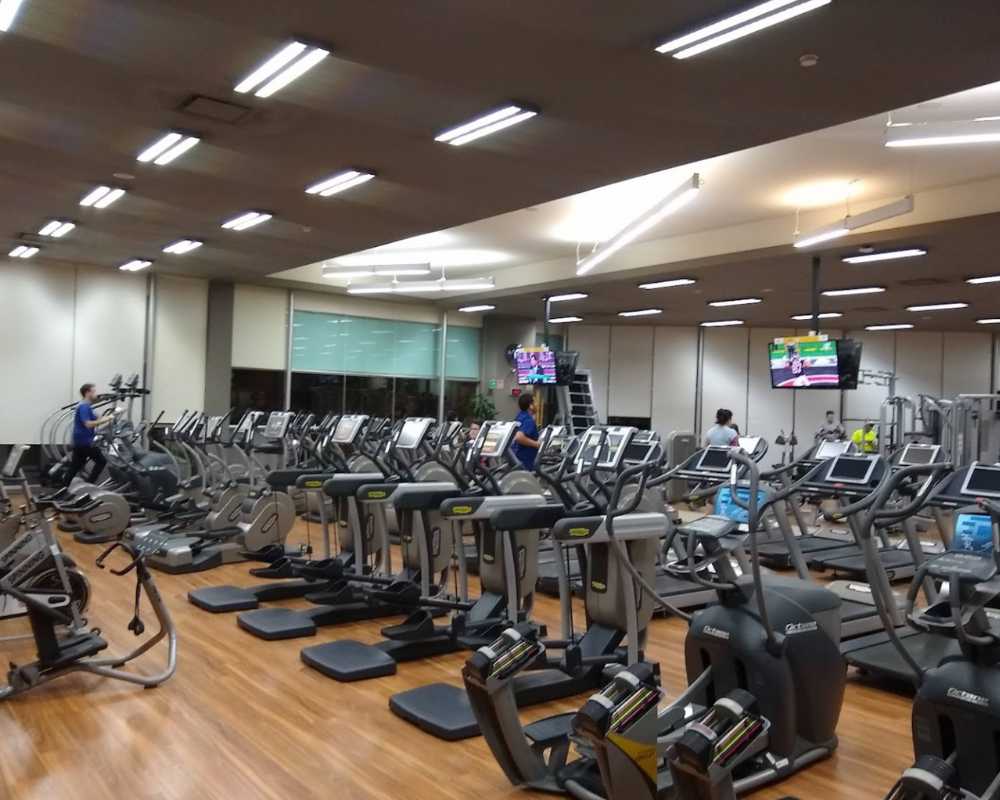

These gyms cater to individuals who desire a balance between affordability and a more comprehensive workout experience.
Premium gyms, such as Hard Candy Fitness and EGO, offer top-of-the-line equipment, luxurious facilities, various classes, and additional services such as spas and nutrition consultations. Membership fees for premium gyms can range from $80 to over $150 per month. These high-end gyms cater to individuals seeking a more exclusive and upscale fitness experience.
It’s important to note that these prices are approximate and may be subject to additional fees or promotional discounts. When selecting a gym in Mexico City, it’s essential to consider factors like location, preferred amenities, and personal budget.
Cost of beauty and wellness in Mexico City
The cost of beauty and wellness services in Mexico City can vary widely depending on the type of service, the provider’s reputation, and the establishment’s location. Here is a brief overview of some common beauty and wellness services and their approximate costs in Mexico City:
Haircuts and hair treatments can range from $10 to $15 at a modest salon, while high-end salons located in upscale neighborhoods like Polanco and Condesa might charge $50 or more for the same service. Similarly, hair coloring services can start at around $40 in a mid-range salon, with prices increasing significantly in premium establishments.


Manicures and pedicures are generally affordable, with a basic service starting at around $10 to $15 in a regular salon. In more luxurious settings, prices can go up to $40 or more for specialized treatments and high-quality products.
Massages and spa treatments can also vary greatly in price. A one-hour massage at a modest wellness center may cost around $30, while luxury spas can charge over $100 for the same service. Facial treatments, body wraps, and other specialized services will typically have a similar price range.
Cost of pet services in Mexico City
The cost of pet services in Mexico City can vary depending on the specific service, the provider, and the location of the establishment. Here is an overview of some common pet services and their approximate costs in Mexico City:
Veterinary care is generally more affordable in Mexico City compared to many other major cities. A standard consultation with a veterinarian can cost between $15 and $30, while more specialized services like vaccinations, diagnostics, and surgeries will have varying prices depending on the complexity of the procedure.
Pet grooming services are widely available in Mexico City, with prices ranging from around $20 to $60 depending on the size of the pet, the type of service, and the reputation of the grooming salon. Basic grooming services for smaller dogs or cats usually cost less, while more comprehensive grooming packages for larger pets will be more expensive.


Dog walking services can vary in price depending on the length and frequency of the walks. A single 30-minute dog walk might cost around $5 to $10, while package deals for multiple walks per week can range from $50 to $100 per month.
Pet boarding services are available for pet owners who need temporary care for their pets while traveling or away from home. The cost for pet boarding typically ranges from $15 to $40 per night, depending on the quality and location of the facility.
These prices are approximate and subject to change. When choosing pet services in Mexico City, it is important to consider factors such as the provider’s reputation, the quality of service, and your personal budget.
Shopping costs in Mexico City
Shopping costs in Mexico City is way expensive than in the United States. Many people here do their shopping in the US and bring it to Mexico and it applies to everything (homeware to clothing).
The prices of shopping in Mexico City is taxed and these products came from the USA anyway. For example, a Macbook Pro (latest model) would cost $999 USD in the United States while in Mexico City, that will be $1,500 USD. The same goes for an iPhone ($800 in the US vs $1,800 in Mexico).
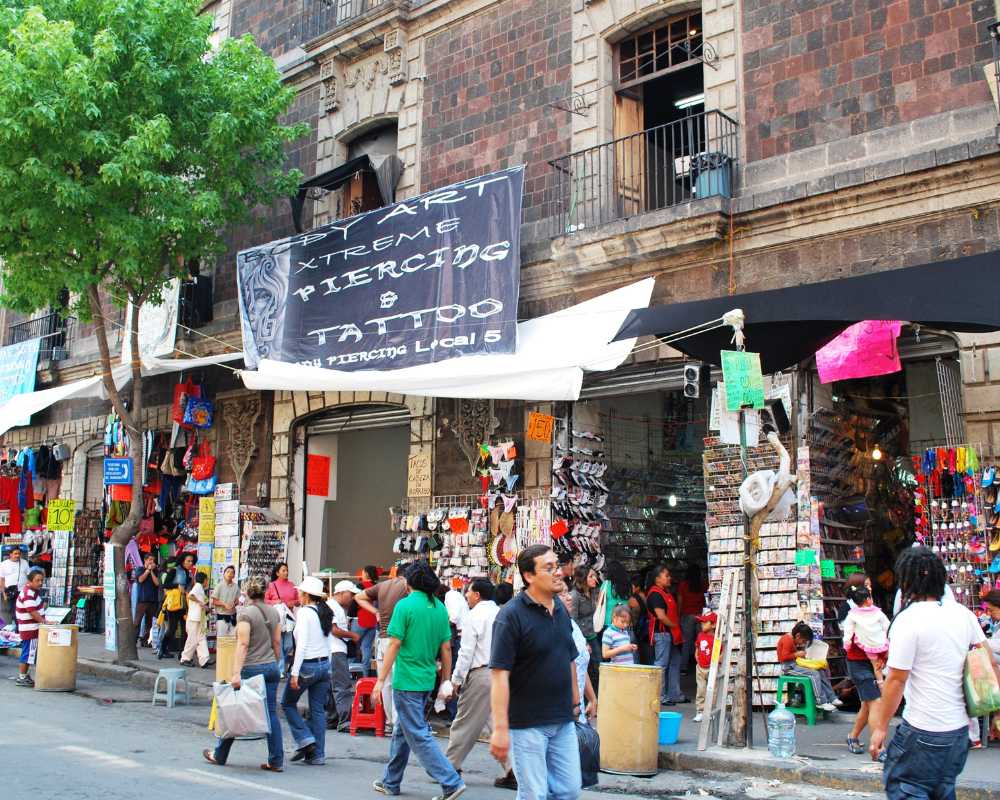

Just add $300 USD for everything you buy from here that is available in the US. You will see how shopping will be more realistic when you visit family in the states. Plus, the products here are so limited you’ll end up having the same clothing like everyone! Shopping is not as diverse here as the USA.
If you do not regularly visit family in the US or Canada, you can check Amazon.mx and Mercado Libre. These two are the top shopping websites that are widely used in Mexico.
⁉️ Cost of living in Mexico City FAQ
How much money do you need to live comfortably in Mexico City?
The amount of money required to live comfortably in Mexico City varies depending on individual preferences, lifestyle, and the city area in which you choose to reside.
A basic rule of thumb is that you’ll need approximately $1,500 to $2,000 USD per month for a single person to live comfortably in Mexico City, considering rent, utilities, transportation, groceries, and other expenses.


Rent for a one-bedroom apartment in a middle-class neighborhood can range from $500 to $800 per month, with utilities adding $60 to $100 USD. Groceries might cost around $200 to $300 USD per month for a single person, while transportation costs, including public transit or occasional rideshare services, can add up to $50 to $100 USD per month.
Eating out, entertainment, and miscellaneous expenses such as gym memberships and personal care services can add another $300 to $500 USD per month, depending on individual preferences and habits. Remember that these figures are approximate and can vary depending on specific circumstances and lifestyle choices.
Is Mexico City expensive to live?
Whether Mexico City is considered expensive to live in largely depends on your perspective and the lifestyle you choose to maintain. Compared to many major cities in the United States, Canada, or Europe, cost of living in Mexico City is generally more affordable. Lower prices can be found in rent, utilities, groceries, and public transportation.
However, it is essential to note that Mexico City is a large and diverse metropolis with varying costs depending on the neighborhood and personal lifestyle choices. Living in more upscale neighborhoods like Polanco, Condesa, or Roma can be more expensive, with higher rent prices and costs for dining and entertainment.
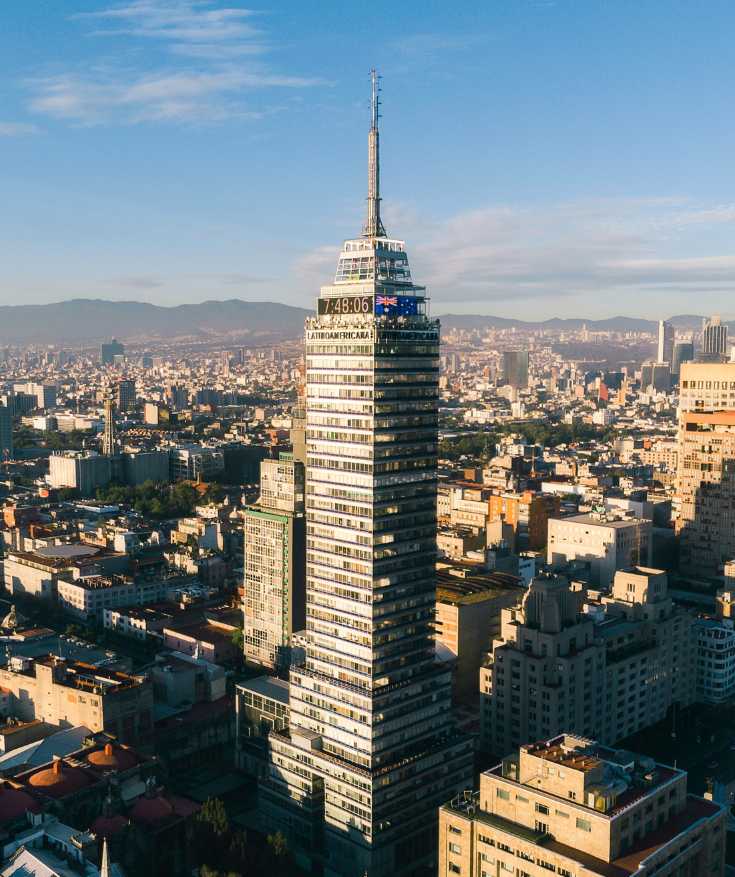

That said, there are many middle-class and more affordable neighborhoods throughout the city where residents can enjoy a comfortable lifestyle without spending exorbitant amounts of money. When living within a reasonable budget, Mexico City can offer a high quality of life at a relatively lower cost.
Mexico City is not generally considered an expensive city than many other major cities worldwide. However, personal expenses can vary depending on lifestyle choices and the area of the city one chooses to reside in.
How much money do you need in Mexico City?
The amount of money you need in Mexico City depends on factors such as your personal preferences, lifestyle, and the area of the city in which you choose to live. Considering expenses like housing, utilities, transportation, groceries, and entertainment is essential when determining the necessary budget.
Check all the prices in this cost of living in Mexico City guide, list them down and do the math!
Can you live in Mexico City as an American?
Yes, as an American, you can live in Mexico City, and many American expats have chosen to call it their home. Cost of living in Mexico City is way lower compared to many major cities in the United States, and a diverse array of amenities and services catering to different lifestyles.
To live in Mexico City, Americans will need to obtain the appropriate visa from a Mexican consulate or embassy in the United States. The most common type of visa for those planning to live in Mexico long-term is the temporary resident visa, which allows you to live in the country for up to four years. This visa may require proof of financial stability or an offer of employment from a Mexican company.
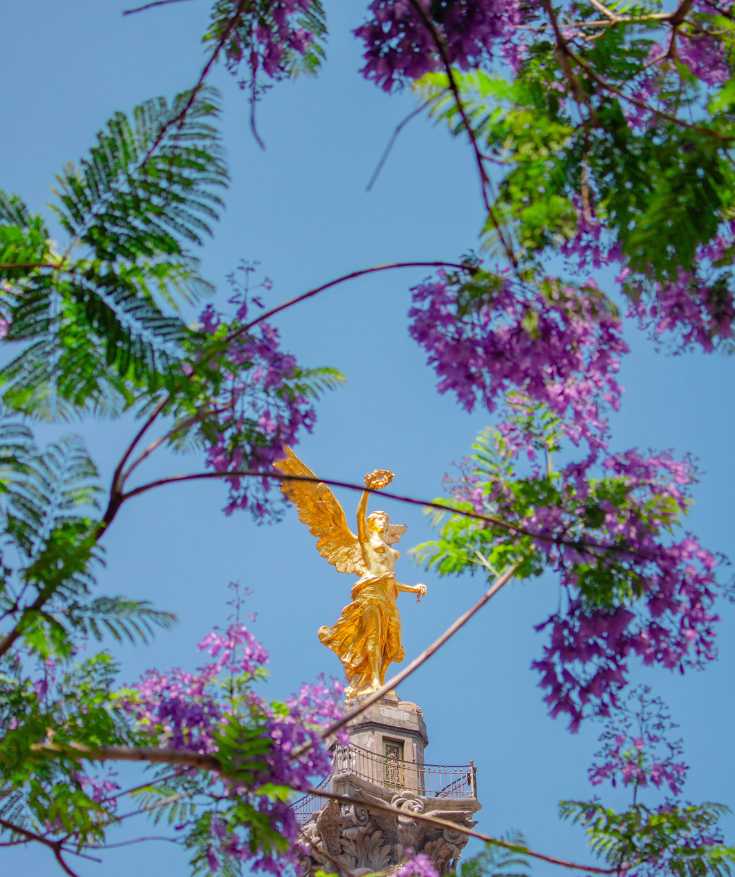

Once in Mexico City, Americans can find various housing options, from budget-friendly apartments to upscale neighborhoods. Expats often reside in areas like Condesa, Roma, and Polanco, which are known for their safety, walkability, and dining options.
Learning basic Spanish is highly recommended, as it will make daily life and interactions with locals easier. However, many people in Mexico City, especially in tourist and expat-friendly areas, speak English, making the transition smoother for Americans.
In conclusion, with proper planning, visa arrangements, and a willingness to adapt to a new culture, Americans can indeed live in Mexico City and enjoy the exciting lifestyle it offers.
Do they accept American money in Mexico City?
In Mexico City, the official currency is the Mexican Peso (MXN). While some establishments, particularly those catering to tourists or located in tourist areas, may accept US dollars, it is not the norm, and you should not expect every business to accept American currency. Furthermore, even if a business accepts US dollars, the exchange rate offered might not be as favorable as the rates you would get at a currency exchange or bank.
When visiting or living in Mexico City, it is highly recommended to exchange your US dollars for Mexican Pesos. You can do this at currency exchange offices, banks, or even withdraw pesos directly from ATMs. Using a bank or an ATM often provides better exchange rates than currency exchange offices in tourist areas.


Another option for making purchases is using a credit or debit card, which is widely accepted in Mexico City, especially in larger stores, restaurants, and hotels. Keep in mind that your bank might charge a foreign transaction fee, so it’s important to be aware of any fees associated with using your card abroad.
In summary, while some establishments in Mexico City may accept American money, it’s best to use Mexican Pesos for most transactions to avoid potential complications and ensure favorable exchange rates.
Can you live in Mexico City without a car?
Yes, you can live in Mexico City without a car, as the city has a well-developed public transportation system that allows residents and visitors to move around efficiently. Many neighborhoods in Mexico City are also walkable, and the city has made significant efforts to improve pedestrian infrastructure and promote alternative transportation methods like cycling.
Public transportation options in Mexico City include the extensive metro, which covers a large portion of the city, buses, and a light rail system called Metrobús.
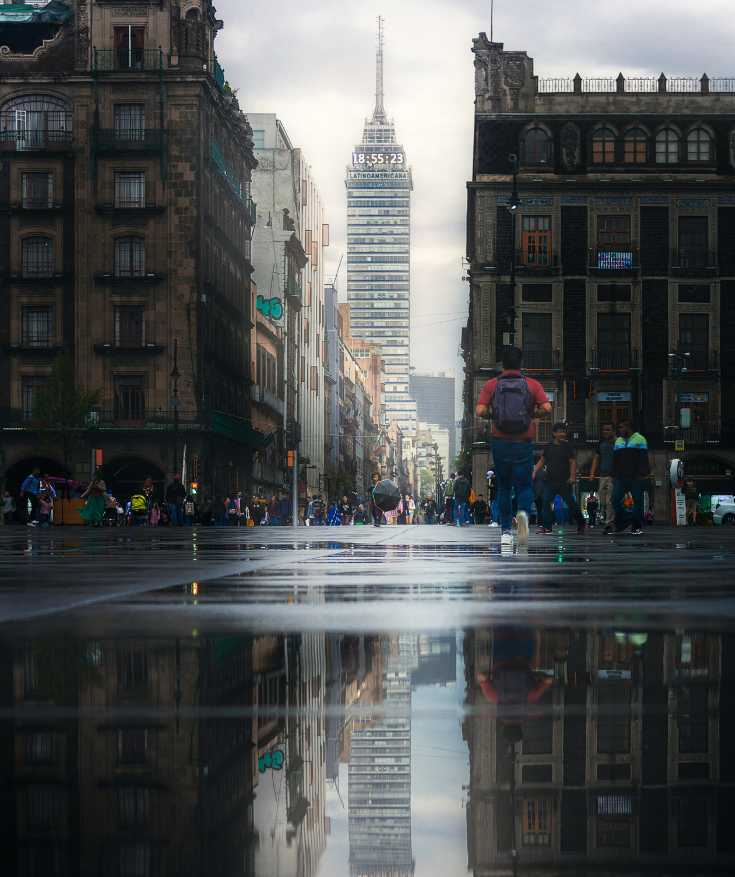

These options are relatively affordable and can quickly get you to most areas of the city. Additionally, plenty of taxis and rideshare services like Uber are available when you need a more direct or private mode of transportation.
Some neighborhoods, like Condesa, Roma, and Polanco, are known for their walkability and proximity to various amenities like restaurants, cafes, and shops. Living in such areas can further reduce the need for a car.
Living without a car in Mexico City can have its advantages, as traffic congestion is a significant issue in the city, and owning a vehicle can be costly due to expenses like insurance, maintenance, and parking fees.
What are the advantages of living in Mexico City?
Living in Mexico City offers numerous advantages that attract both locals and expats to the bustling metropolis. One of the key attractions is the city’s vibrant culture, which is a blend of pre-Hispanic, colonial, and contemporary influences. This rich cultural history is visible in the architecture, museums, and historic sites scattered throughout the city.
Another advantage is the lower cost of living in Mexico City compared to many major cities in the United States, Canada, or Europe. Affordable housing, utilities, groceries, and public transportation allow for a comfortable lifestyle at a relatively lower cost.
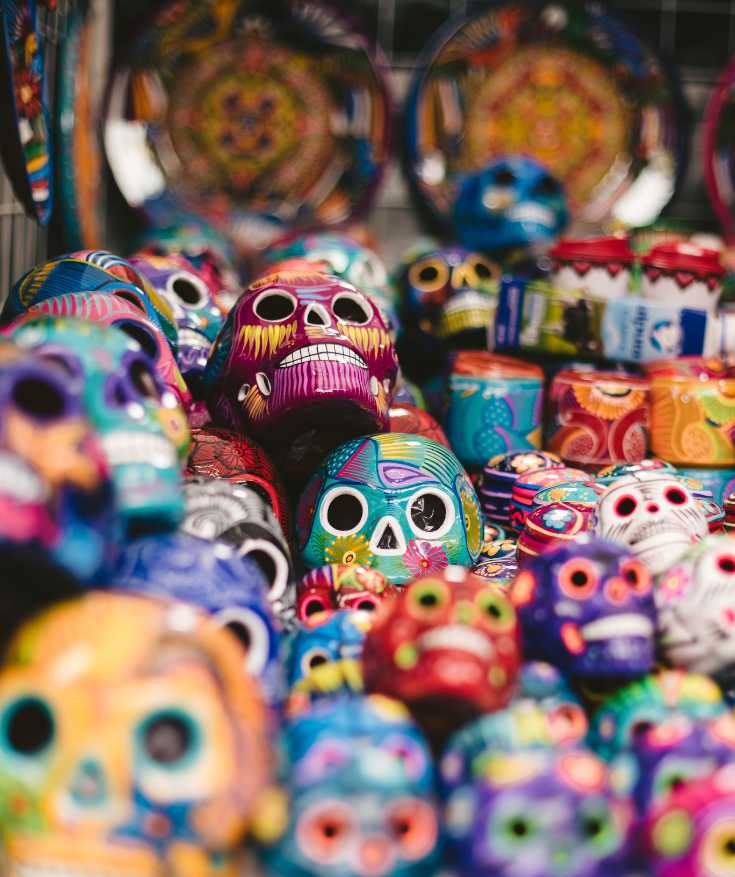

The food scene in Mexico City is diverse and enticing, with a wide variety of options ranging from street food to fine dining. The city is famous for its traditional Mexican cuisine, but you can also find an array of international culinary options to suit every palate.
Mexico City also offers a thriving arts and entertainment scene, with numerous galleries, theaters, and live music venues. The city hosts various cultural events and festivals throughout the year, ensuring that something is always happening to engage residents and visitors alike.
The city’s central location within Mexico makes it a convenient base for exploring the rest of the country. With numerous domestic flights and bus routes available, residents can easily travel to other regions and enjoy Mexico’s diverse landscapes and experiences.
Can I retire in Mexico City?
Yes! Anyone can retire in Mexico City. Retiring in Mexico City benefits those looking for a lively, culturally rich, affordable destination.
The lower cost of living in Mexico City compared to many cities in the United States and Europe is a significant advantage, allowing retirees to stretch their retirement savings further. Affordable housing, utilities, healthcare, and daily essentials contribute to a comfortable lifestyle on a budget.
Mexico City’s vibrant culture, with its mix of pre-Hispanic, colonial, and contemporary influences, offers retirees a stimulating environment to enjoy their golden years.
The city boasts many museums, historic sites, and cultural events catering to a wide range of interests, ensuring there’s always something new to explore and learn.
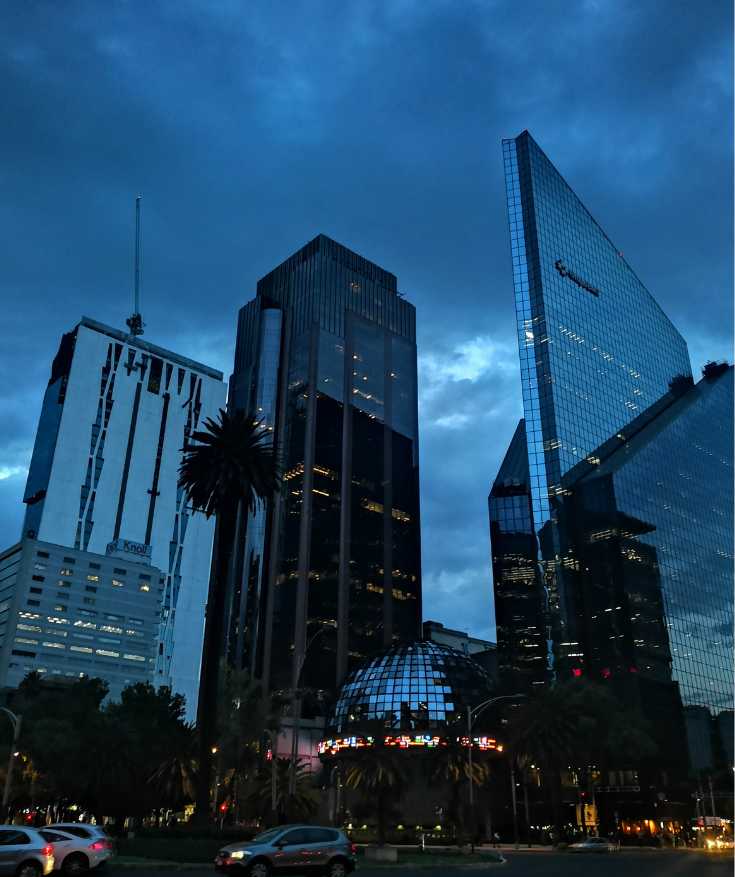

The diverse culinary scene in Mexico City is another attraction for retirees, who can enjoy both traditional Mexican cuisine and international food options. From street food to fine dining, the city offers a variety of dining experiences at different price points.
The city’s healthcare system includes well-equipped hospitals and clinics, with many medical professionals speaking English. Private healthcare options are cheaper than the United States, and some retirees may also be eligible for the Mexican public healthcare system.
In conclusion, retiring in Mexico City offers a combination of cultural richness, affordability, diverse culinary experiences, and accessible healthcare, making it an appealing destination for many retirees seeking a fulfilling and comfortable life abroad.
🇲🇽 Living in Mexico Resources
🚗💨 I’m moving to Mexico. What do I need to prepare?
We have many resources about moving to Mexico on this blog. But first, we recommend you talk to our relocation expert for a more personalized plan.
⚖️ How do I get a residency visa in Mexico?
There are many types of Mexico residency visas. It’s best to get in touch with an attorney to know the right type of visa for you. Book a call with our in-house attorney to get started!
🏠 Can you help me find housing in Mexico?
ABSOLUTELY! We have a house rental viewing program where we schedule a full itinerary for you to find one-year rentals. Get in touch for more info!
🏡 Can you assist with Real Estate buying in Mexico?
FOR SURE! We have our own certified Mexico realtors who can help you with buying. We also send available properties via e-mail. Feel free to subscribe to get these listings!


